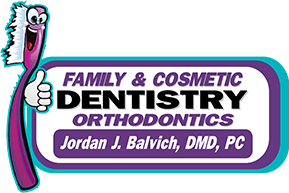 You might not notice it at first—but the way you breathe could be affecting everything from your sleep to your posture to your smile. Mouth breathing is far more common than you might think, especially in children—and it’s often overlooked.
You might not notice it at first—but the way you breathe could be affecting everything from your sleep to your posture to your smile. Mouth breathing is far more common than you might think, especially in children—and it’s often overlooked.Many people assume that unless they’re congested, they must be breathing through their nose. But habits, structural issues, or even jaw development problems can train the body to rely on the mouth instead.
So how can you tell if you’re a mouth breather?
Here are 7 subtle but revealing signs:
1. Dry Mouth or Cracked Lips (Especially in the Morning)
Waking up with a dry, sticky mouth or needing water during the night can be a sign that you’re not breathing through your nose while sleeping. Saliva evaporates quickly when the mouth is open, which also increases your risk of tooth decay and gum disease.
2. Frequent Snoring or Open-Mouth Sleeping
Snoring—especially in children—is almost always a sign of airway obstruction or mouth breathing. Take a photo of your child while sleeping. If their mouth is open, it’s worth exploring why.
3. Bad Breath Despite Good Hygiene
Mouth breathing dries out saliva, which is essential for naturally cleaning the mouth and controlling bacteria. Without it, odors build up fast—even if you brush and floss regularly.
4. Daytime Fatigue or Trouble Focusing
Mouth breathing leads to less efficient oxygen exchange, which can leave you feeling groggy, foggy, or wired-but-tired. Kids who mouth breathe are often misdiagnosed with ADHD due to poor sleep and low oxygen levels at night.
5. Forward Head Posture or Slouched Shoulders
When the airway is blocked or underdeveloped, the body compensates by pushing the head forward to get more air. This can lead to neck pain, shoulder tension, and a slumped posture.
6. Anxiety or Shallow Breathing Patterns
Mouth breathing activates the sympathetic nervous system—the “fight or flight” mode. This can lead to chronic stress, shallow chest breathing, and difficulty relaxing.
7. Crowded or Crooked Teeth in Children
The tongue plays a major role in shaping the jaws. If it’s low in the mouth (as it is with mouth breathing), the upper jaw tends to narrow and teeth crowd. Orthodontic issues are often a downstream effect of poor breathing habits.
🚨 Why This Matters
Mouth breathing isn’t just a bad habit—it’s often a symptom of an underlying problem. Whether it’s enlarged tonsils, nasal obstruction, allergies, or tongue tie, the result is the same: poor oxygenation, poor sleep, and an increased risk for long-term health problems.
The earlier we catch it, the better the outcome—especially for growing kids.
✅ What You Can Do
If you notice these signs in yourself or your child, consider the following steps:
-
Nasal hygiene: saline sprays, allergy support, or nasal breathing exercises
-
Myofunctional therapy: retrains muscles for proper breathing and swallowing
-
Orthodontic screening: early evaluation can prevent bigger issues later
-
Airway-focused exam: not all dentists screen for breathing—look for a provider who does
🌟 Final Thought
You were designed to breathe through your nose. If something’s gotten in the way of that natural process, the effects can show up in surprising ways. The good news? With the right approach, it’s never too late to retrain the body to breathe the way it was meant to.
If you’re ready to get to the root cause of poor breathing and take control of your health or your child’s development, we’re here to help.
